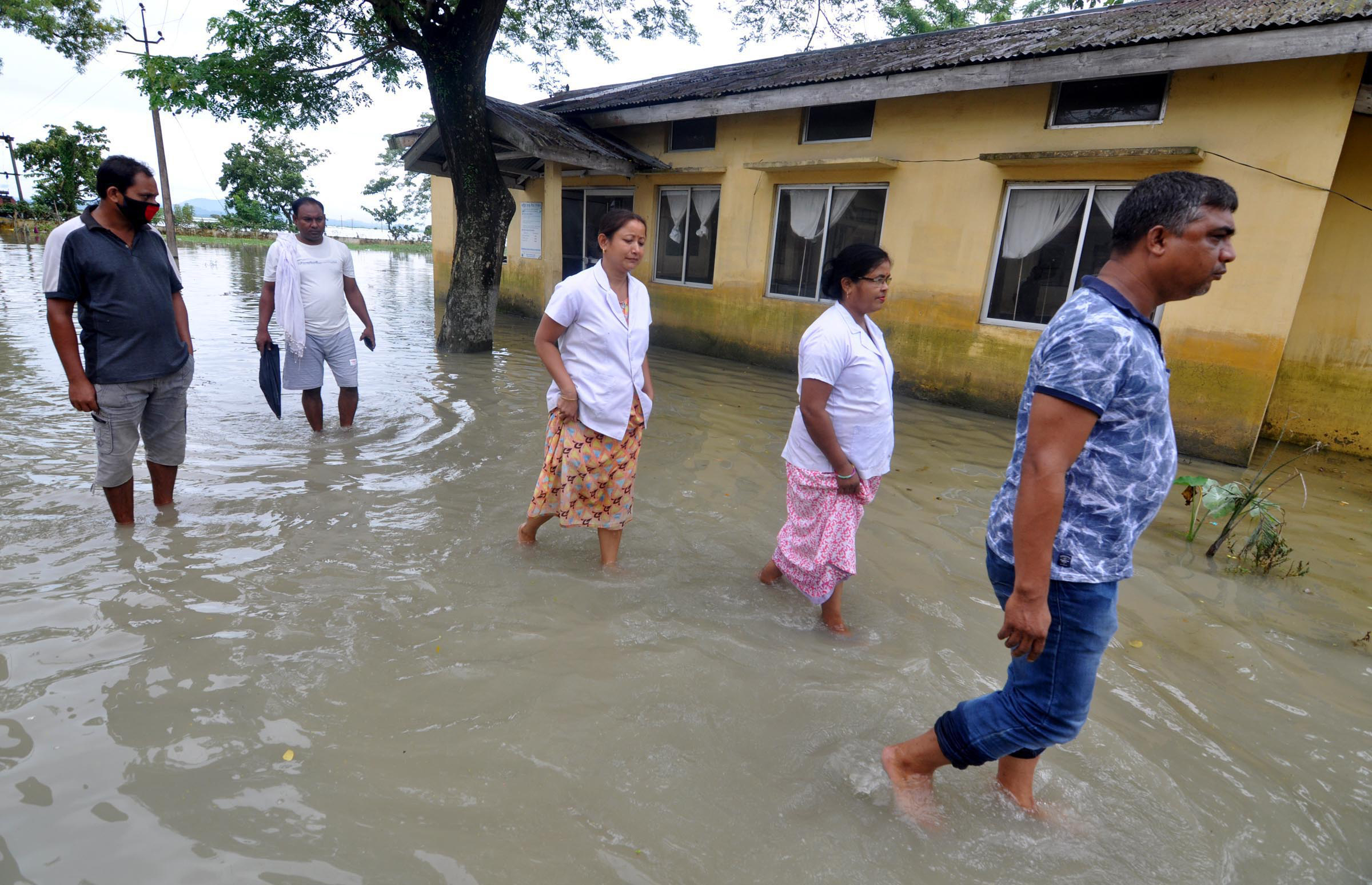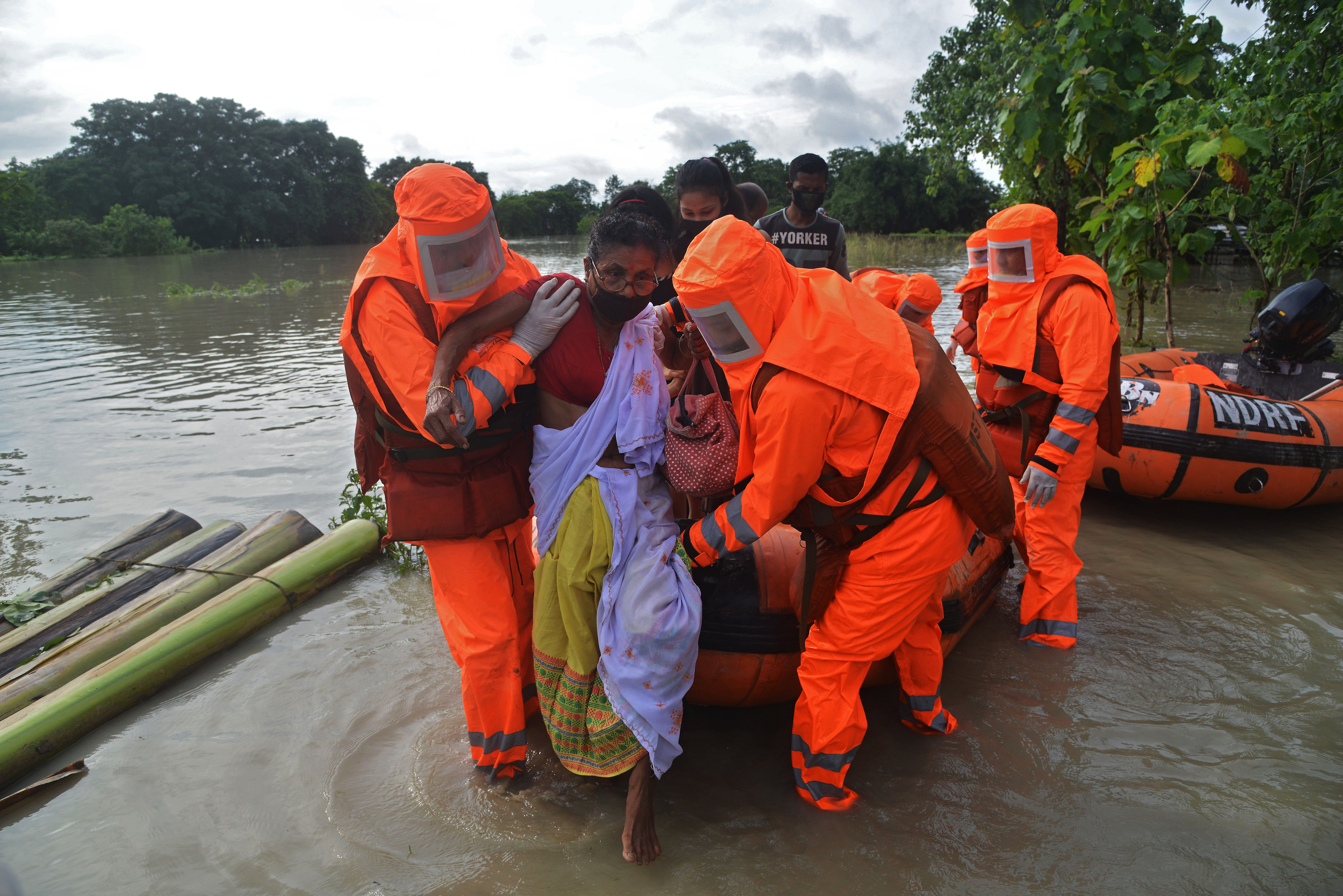The ongoing floods in northeastern India have killed 10 members of the second-largest rhino species, of which only 3,500 individuals exist in the wild.
The annual floods, in the northeast state of Assam, have also killed 97 people and displaced 2.6 million.
Floodwaters have taken over 90 percent of the Kaziranga National Park and Tiger Reserve, the largest home of the greater one-horned rhinoceros, also called the Indian rhinoceros. The Indian rhinoceros is considered Vulnerable, according to the International Union for the Conservation of Nature’s Red List of threatened species. At least 129 animals have been killed inside the park.
The park, which is spread across three districts of Golaghat, Karbi Anglong and Nagaon, was deemed a World Heritage site by UNESCO in 1985. The World Wildlife Fund states that the park is home to animals that face a “high risk of extinction in the wild.”
Kaziranga currently has two-thirds of the world’s population of this species, which is close to extinction due to hunting or killing as agricultural pests.

The death of Kaziranga’s rhinos prompted the United Kingdom’s Prince Willian and Kate Middleton to write to the Kaziranga park officials on July 25. The British royal couple had visited the park in 2016 to learn about the forest conservation efforts and anti-poaching measures to reduce the killings of rhinos.
"We have the happiest memories of our visit to Kaziranga in April 2016 and are shocked by what happened,” the couple reportedly wrote to the director of the park. “The deaths of so many animals, including one-horned rhino, is deeply upsetting.”
Regional media also reported that the floods forced animals out of the submerged parts of the parks to seek refuge in people’s homes. Wildlife authorities note that while animals straying out of the parks during the annual floods is not unusual, this is the first time the prolonged deluge is forcing the animals to move out for long stretches due to shortage of food.
The Assam State Disaster Management Authority (ASDMA) recorded the displacement of 887,518 big animals, 456,779 small and 899,157 poultry animals across 19 districts of the state.

The floods have adversely affected 27 out of 33 districts in Assam. According to the ASDMA, while 97 people died in flood-related incidents, 26 were killed in landslides. The Brahmaputra river continues to flow above the danger mark in the cities of Guwahati, Tezpur, Dhubri and Goalpara.
Parimal Suklabaidya, Assam’s state forest and environment minister, told regional news outlets that this year’s casualty is less compared to previous years. “The third phase of the flood is ongoing in Kaziranga and till now 127 wildlife deaths have been reported whereas last year there were 263 wildlife deaths reported in Kaziranga,” he said on July 25.
In India, floods have also impacted states of West Bengal, Bihar and Meghalaya, bordering Bangladesh. The Indian National Emergency Response Centre recorded over 6.8 million being affected severely by the floods.
The torrential monsoon floods have wreaked havoc across Bangladesh and Nepal, apart from India. The International Federation of Red Cross and Red Crescent Societies (IFRC) called it a “humanitarian crisis” in South Asia, which has affected 9.6 million people across three countries. “Every year there are monsoon floods, but this year is different as it comes at the height of a deadly COVID-19 global pandemic,” said Jagan Chapagain, secretary-general, IFRC.
In Bangladesh, over 2.8 million people have been affected, while in Nepal, flooding and landslides killed 110 people. Across India, Bangladesh and Nepal, 550 died.
Follow Pallavi Pundir on Twitter.
from VICE https://ift.tt/3jCMKPQ
via cheap web hosting
No comments:
Post a Comment